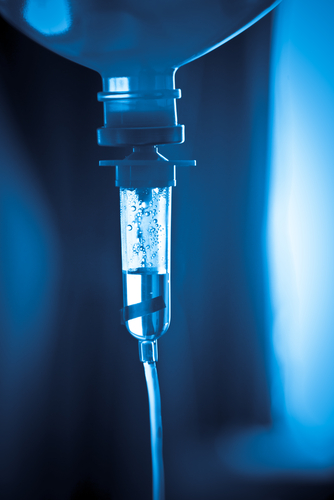 A new study on the potential impact of Glucagon-Like Peptide-1 in Diabetes entitled “Endogenous Glucagon-Like Peptide-1 Reduces Drinking Behavior and Is Differentially Engaged by Water and Food Intakes in Rats” was published in the Journal of Neuroscience by Naomi J. McKay and Daniela L. Galante, part of Dr. Derek Daniels’s group from Behavioral Neuroscience Program, Department of Psychology at The State University of New York at Buffalo in New York. In this study, the research team showed a new function for the endogenous Glucagon-Like Peptide-1 (GLP-1) system in fluid intake and demonstrated that elements of the GLP-1 system can be triggered independently by different forms of ingestive behavior.
A new study on the potential impact of Glucagon-Like Peptide-1 in Diabetes entitled “Endogenous Glucagon-Like Peptide-1 Reduces Drinking Behavior and Is Differentially Engaged by Water and Food Intakes in Rats” was published in the Journal of Neuroscience by Naomi J. McKay and Daniela L. Galante, part of Dr. Derek Daniels’s group from Behavioral Neuroscience Program, Department of Psychology at The State University of New York at Buffalo in New York. In this study, the research team showed a new function for the endogenous Glucagon-Like Peptide-1 (GLP-1) system in fluid intake and demonstrated that elements of the GLP-1 system can be triggered independently by different forms of ingestive behavior.
Diabetic patients have an increased risk of dehydration, and there are some drugs that are prescribed to treat this condition that mimic the function of endogenous glucagon-like peptide-1 (GLP-1) that induces the release of insulin. The glucagon-like peptide-1 is produced in the ileum and the nucleus of the solitary tract. It has been shown that GLP-1 controls food intake, and there have been more studies suggesting that this hormone is also involved in fluid intake, yet it is not known if endogenous GLP-1 and its receptor contribute to the control of physiological fluid intake.
In this study, the research team inhibited the endogenous GLP-1 action using a receptor antagonist, exendin-9 (Ex-9),which inhibits the signal that GLP-1 sends to the brain when binding to its receptor, i.e. decreased fluid intake, and measured drinking behavior. The researchers used a lickometer to study licking patterns, which measures the number of times a rat tongue in an experiment touches an electrical port for water, and the number of licks are followed and transformed into a certain volume of fluid. In addition, they quantified changes in the gene expression of GLP-1 after fluid intake and compared these effects with those caused by food intake.
The researchers found that rats injected with the antagonist exendin-9 drank more liquid after subcutaneous injection of hypertonic saline or water removal with partial rehydration when compared with rats treated with vehicle. By analyzing the licking behavior, the researchers observed that Ex-9 increased fluid intake by increasing the number of licking bursts, without affecting the number of licks per burst, suggesting that endogenous GLP-1 suppresses fluid intake through satiety. Further experiments indicated that water intake had a specific impact on gene expression of central GLP-1, different from food intake that induced central and peripheral GLP-1 expression. Although water and food intakes both affected central GLP-1-relevant gene expression, there were notable differences in the timing of the effect.
“Licking patterns can give us hints about why rats drink more or less after an experimental manipulation,” said Dr. Daniels in a press release. “In this study, we found that the rats were probably drinking more because they were feeling less full from the drinking.”
“Clearly what we’re seeing, not just in this paper, but in all three papers, is that these substances decrease drinking behavior,” said Dr. Daniels. “But we’re not saying people shouldn’t use these drugs to treat diabetes, and we’re not saying they are ineffective tools for the treatment of diabetes. However for populations already at risk for dehydration it may be something we want to be more concerned about. Normally, it’s the basic research that informs the applied research. Basic research tells us what drugs to try for treating a disease. But in this case, we’ve used the drug and the clinical relevance to learn more about basic abilities of the body and how the body functions.”
This research was funded by The National Institutes of Health, an American Psychological Association dissertation award and the Mark Diamond Research Fund of the Graduate Student Association at the University at Buffalo for McKay.


